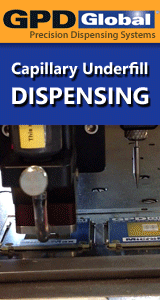Printed Circuit Board Assembly & PCB Design Forum
SMT electronics assembly manufacturing forum.
- SMTnet
- »
- Electronics Forum
- »
- Ultrasonic washing for boards
Ultrasonic washing for boards
![]() Does someone use Ultrasonic washing machine to remove nc or ...
- Apr 23, 2005
by
molosse21
Does someone use Ultrasonic washing machine to remove nc or ...
- Apr 23, 2005
by
molosse21
![]()
![]()
![]() The issue of using ultrasonic technology for post reflow de-...
- Apr 25, 2005
by
The issue of using ultrasonic technology for post reflow de-...
- Apr 25, 2005
by
![]()
![]() Mike Conrad's "matter of full disclosure" is not quite compl...
- Apr 25, 2005
by
CarlN
Mike Conrad's "matter of full disclosure" is not quite compl...
- Apr 25, 2005
by
CarlN
![]()
![]()
![]() Hi Carl / Bill,
I seem to miss your point regarding discl...
- Apr 25, 2005
by
Hi Carl / Bill,
I seem to miss your point regarding discl...
- Apr 25, 2005
by
![]()
![]() It was a resonant frequency that brought down the Narrows br...
- Apr 27, 2005
by
Paul pmd
It was a resonant frequency that brought down the Narrows br...
- Apr 27, 2005
by
Paul pmd
![]()
![]()
![]() Hello Paul,
Prior to 1980, I would say that your concerns...
- Apr 28, 2005
by
KKleinsmith
Hello Paul,
Prior to 1980, I would say that your concerns...
- Apr 28, 2005
by
KKleinsmith
![]()
![]()
![]() We received about 5K assembly boards from china. They left ...
- May 03, 2005
by
We received about 5K assembly boards from china. They left ...
- May 03, 2005
by
![]()
![]() Hello Frank,
Just a quick note regarding the use of your ...
- May 04, 2005
by
KKleinsmith
Hello Frank,
Just a quick note regarding the use of your ...
- May 04, 2005
by
KKleinsmith
![]()
![]()
![]() just want to know the pcb of ultrasonic cealner to make a on...
- May 10, 2005
by
just want to know the pcb of ultrasonic cealner to make a on...
- May 10, 2005
by
- SMTnet
- »
- Electronics Forum
- »
- Ultrasonic washing for boards







